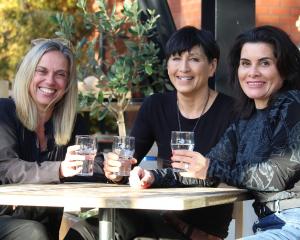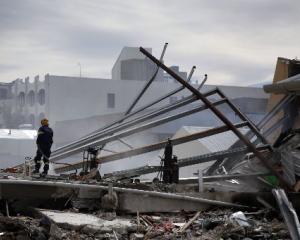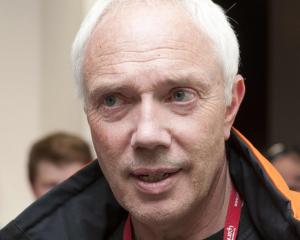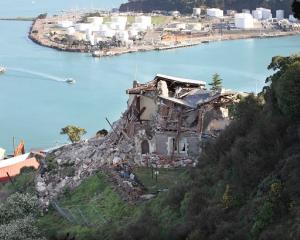Gayel Marquet, of Christ- church's beachside suburb Sumner, expressed the feelings of a city after more than 50 earthquakes shook the area yesterday, including a brace of big shakes early in the afternoon.
A magnitude-6 earthquake, which struck at 2.20pm about 10km southeast of Christchurch at a depth of 9km, sent stressed residents scrambling about 90 minutes after a 5.5 quake rocked the city.
No-one died in the tremors, in contrast to the 6.3-magnitude quake on February 22, which killed 181 people, but people were injured, buildings collapsed, power was cut to at least 56,000 households and businesses - of which 20,000 were unlikely to be reconnected overnight - silt from liquefaction bubbled up again and water supplies to some suburbs were disrupted.
The tower of Lyttelton's historic Timeball Station collapsed, as did St John's Church in central Christchurch. Two people were trapped when the church collapsed, but were quickly freed.
The district health board reported two or three major cases of injury, but could not specify their nature. It said 12 people were admitted to hospitals and others were treated for minor injuries, many caused by debris falling from buildings.
The Christchurch City Council said six people were taken to hospital after the first major aftershock and about 40 after the second.
Police evacuated the central-city red zone after the 1pm quake.
He expected work would stop for "four or five" days, as the red zone - crippled by the February 22 quake - was now potentially dangerous.
Liquefaction was reported at a number of locations, particularly in Sumner and Bexley.
Lyttelton Port of Christchurch said it had suffered damage and it would assess the extent today.
Christchurch schools will be closed today to allow building assessments to take place.
Barrington resident Andrew Beaumont said "people have had enough".
Residents are "much more frightened now" of the big shakes, which continue to unsettle the city, despite having become accustomed to smaller-sized aftershocks, he said.
He described hearing crockery, glassware and furniture "breaking and shattering" as it was shaken to the floor inside his house.
Alan Harris, who lives in Kinsey Tce, a clifftop street in Sumner, said residents were last night leaving in droves after being hammered by rockslides.
A neighbour's home was torn in two, one half turned into debris amid the rubble at the foot of the cliff far below.
Mr Harris guessed up to one-third of Kinsey Tce homes were "shattered" by falling boulders and were uninhabitable.
"A lot of people have lost the plot here. They can't take it any more. You can't blame them really," Mr Harris said.
Pier Smulders, managing director of Mainland Press, which is based at Harewood and is now host to CTV, said yesterday's two major earthquakes had "really freaked people out".
Out with a film crew in Latimer Square, close to the central-city cordon, Mr Smulders said the second big earthquake was "very, very intense".
"There was a lot of masonry falling from the damaged buildings inside the cordon. You could see the bricks coming down and a lot of dust everywhere. It's just as well the cordon is still up."
Former Dunedin resident Rachael Fahey spent her first afternoon in Christchurch having to deal with the frightening experience of the two major shakes.
"I don't know how everyone has been able to deal with this all the time. It just makes you feel sick," Ms Fahey, a former employee at the University of Otago's faculty of law, said.
- Reporting by Sarah Marquet, Matthew Haggart and NZPA
- Additional reporting by The New Zealand Herald.






